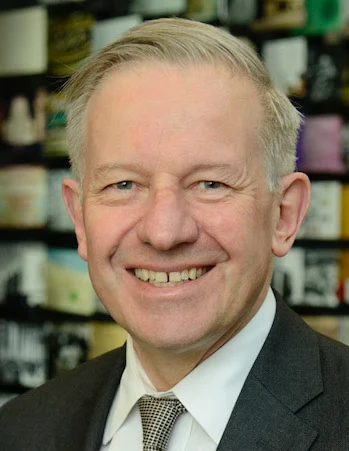Clovelly welcomes Sir Sherard Louis Cowper-Coles KCMG LVO to a Forum on World Affairs, International Relations, Security & Defence and Science & Technology. A platform for providing information for informed choices . In its 8th year, Clovelly Lectures has found a reflective and responsive audience. A curiosity and interest in listening and discussing matters that directly impact our lives in a fast changing and confusing economic and political world.
Sir Sherard Cowper-Coles joined HSBC Holdings in October 2013 as Senior Adviser tothe Group Chairman and Group Chief Executive. In May 2015, he was appointed to a new post as Group Head of Government Affairs, and then as Group Head of Public Affairs from June 2017. He is also Chairman of HSBC Bank Oman SAOG, and a Director of HSBC Bank Egypt SAE.
Before HSBC Sherard worked for two and a half years as Business Development Director, International, at BAE Systems PLC. Earlier he spent over 30 years in the British Diplomatic Service, which he joined straight from reading Classics at Oxford. He served in Cairo, Washington and Paris.
He was also Principal Private Secretary to the UK Foreign Secretary, the late Robin Cook, and was Head of the Foreign Office Hong Kong Department from 1994 up to the handover to China in 1997. His final diplomatic jobs were as Ambassador to Israel(2001–2003), Ambassador to Saudi Arabia (2003–2007), Ambassador to Afghanistan (2007-2009), and the UK Special Representative for Afghanistan and Pakistan (2009–2010).
Sherard is also Chairman of the UK Financial Inclusion Commission; an Ambassador for the Money Advice Trust, and for the Winston Churchill Memorial Trust; a member of the Boards of the China-Britain Business Council, and the Egyptian British Business Council; Chairman of the Omani-British Business Council; a Committee Member of The Hong Kong Association; and a Board Member of Asia House. He is President of the Algeria British Business Council;and Chair of the UK Advisory Council, LSE Confucius Institute for Business London, and of Pitzhanger Manor & Gallery Trust.
He sits on the International Engagement Committee of the British Academy. He is an Honorary Fellow of Hertford College, Oxford, and President of the Jane Austen Society. He has an honorary D Litt from the University of Westminster, and is a Liveryman of The Skinners' Company. Sherard is the author of two books about his diplomatic experiences: Cables from Kabuland Ever the Diplomat. He speaks French and Arabic, some Hebrew and rudimentary Pashtu
👀👀👀👀
CLOVELLY LECTURES
CHAIRMAN : SIR MICHAEL BURTON . KCVO CMG
DIRECTOR : THE HONOURABLE MRS ROUS
RECEPTION-LECTURE-DEBATE-DINNER
Saturday October 7th 2017
"What the Jihadis Really Want"
Speaker
Sir Sherard Louis Cowper-Coles KCMG LVO
----------------
For tickets and further information please contact
Clovellylectures11@gmail.com or Tel: 01237 431200
www.clovellylectures.com
Clovellylectures11@gmail.com or Tel: 01237 431200
www.clovellylectures.com





